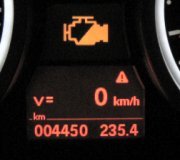One correction to be aware of. There's no voltage regulator inside the alternator. Chrysler never did that on their domestic vehicles. For most years, including yours, full system voltage is applied to one field terminal, then the other one goes to ground through the regulator inside the Engine Computer. That made it real easy to diagnose that part of the circuit. Normal was to find between 4 - 11 volts on that control wire. The lower the voltage, the bigger the electromagnetic field and the harder the alternator would work. As a point of interest, due to the circuitry inside the computer, even in the rare event the regulator circuit would totally short, it didn't drag that voltage down to 0.0 volts. The most it could do was pull it down to around 4 volts. It WAS common to find 0.0 volts on that control wire, but that was due to worn brushes and an open circuit. The big clue there was that always started out as an intermittent no-charge condition that got progressively worse over months.
That circuit worked so well and was way too easy to diagnose, so the engineers had to goof it up. Now they apply ground to one field terminal and supply a varying voltage to the other one to control charge rate. Voltage readings no longer tell you if the brushes are open. They also added additional control circuits that I haven't delved into yet. GM, in my opinion, had the world's second-best AC generator up through the 1986 model year. You didn't have to know how to diagnose it as it had the regulator built in. You just replaced the entire unit, including all the parts that were still good.
While I don't like the regulator built into a computer, the advantage is they can vary the charge rate, and they can completely turn the alternator off for conditions like wide-open-throttle where you need every ounce of power to pass the freight train, or to lessen the load on the engine when it's running hot. This also gives them the option for remote system voltage sensing. GM had to do that at the instrument cluster to prevent flickering brightness with their first digital dashes.
I mentioned "AC generator". That is the industry term used now. To use technically correct terminology in the classroom, Chrysler developed the AC generator and first used it in 1960 models, and they copyrighted the term, "alternator". You'll rarely find that word in other manufacturer's service manuals, although we all know what is meant when you ask for an alternator.
Way more than you wanted to know, but you'll be a hit at your next trivia contest.
Thursday, February 8th, 2024 AT 6:02 PM




